October itinerary in Japan Day 5 (Fukui Day 3)
(Sunday, October 24)
Table of contents
5. Wakasa Ichinomiya (Wakasahime Shrine)
6. “Sotomo Tour” pleasure boat
1. Imajo-shuku Honjin ruins
In the morning, I moved from Fukui station to Imajō station and visited the site of Imajo-shuku Honjin ruins. The trains I boarded are as follows.
Depart Fukui Station at 8:13, JR Hokuriku Main Line bound for Tsuruga, arrive at Imajō Station at 8:47, fare Yen 590
The site of Imajo-shuku Honjin ruins is a post town used by the Fukui domain when they changed their attendance. It is designated as a national important preservation district of historic buildings. The post town starts about a 3-minute walk from Imajō Station. The coin locker at Imajō station is free, so it’s great when we take a walk.
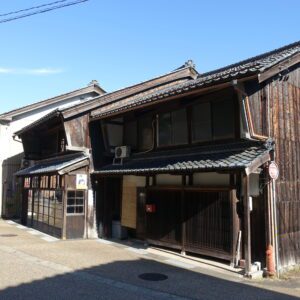

Compared to the well-known post towns such as Ouchi-juku in Fukushima Prefecture and Tsumago-juku in Nagano Prefecture, the ruins of Imajo-shuku have fewer old buildings and have a lesser atmosphere of the Edo period. On the other hand, there are few tourists, so we can take a leisurely stroll.
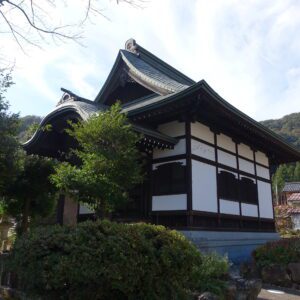
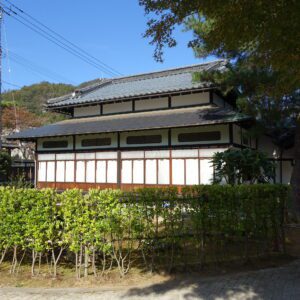
At the top of the mountain behind Imajo Kannon-do is Hiuchi Castle, which is said to have been built by the order of Yoshinaka Kiso, and there is a Basho monument about Yoshinaka Kiso.

The former Showa Kaikan is a national tangible cultural property, and the former Kyouto Jingoro family residence is a tangible cultural property in Fukui Prefecture.

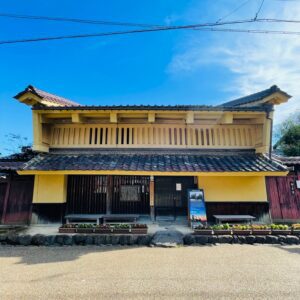
2. Tsuruga
I got off at Tsuruga station by changing trains on the way from Imajojuku Honjin ruins to Obama. The trains I boarded are as follows.
Depart Imajō Station at 9:49, JR Hokuriku Main Line bound for Tsuruga, arrive at Tsuruga at 10:05, fare Yen 330
Bronze statues of Reiji Matsumoto’s works “Galaxy Express 999” and “Space Battleship Yamato” are lined up in Tsuruga. It was installed because it matches the image of Tsuruga’s railway and port.
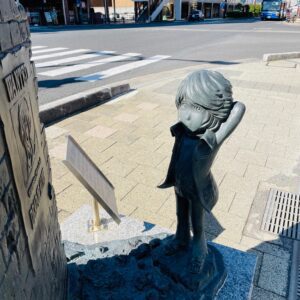

Tsuruga was important place as a departure and arrival station for the European-Asia International Train (Shimbashi-Tsuruga Port Station-Vladivostok-Europe via the Trans-Siberian Railway). The building that reproduces the Tsuruga Port station building is used as the Tsuruga Railway Museum.
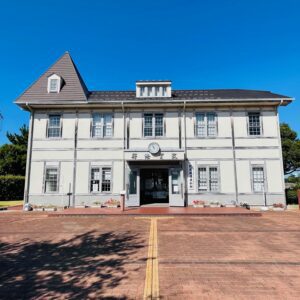
The former Owada Bank Main Store Main Building and Kehi Jingu Shrine Otorii are national important cultural properties. Currently, the former Owada Bank Main Store Main Building is used as the “Tsuruga City Museum”. Kehi Jingu Odorii is a large torii with a height of about 11m and is one of the three major wooden Odorii in Japan along with Kasuga Taisha (Nara Prefecture) and Itsukushima Shrine (Hiroshima Prefecture).
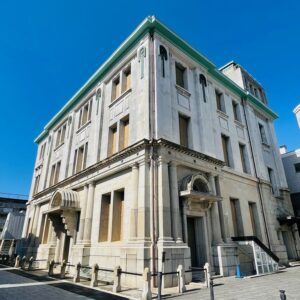
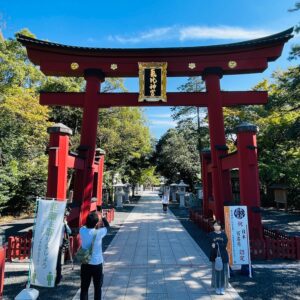
This time, I used the transfer time to go sightseeing in Tsuruga, but next time I would like to have more time to go sightseeing.
3. Myotsuji Temple
After moving from Tsuruga to Obama, I had lunch and went to Myotsuji Temple. The trains I boarded are as follows.
Depart Tsuruga Station at 11:18, JR Obama Line, bound for Higashi-Maizuru, arrive at Obama at 12:24, fare Yen 990
I rented an electrically power assisted bicycle at the tourist information center in front of Obama Station, and it took about 40 minutes (about 9km) to reach Myotsuji Temple. You can get to Myotsuji Temple from Obama Station by “Aiai Bus”, but there are only 4 buses a day.
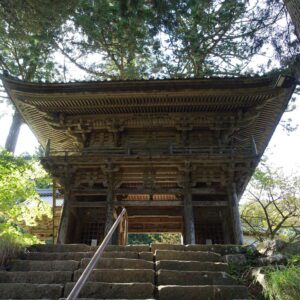
Myotsuji Temple was founded in 806 by Shogun Sakanoue Tamura Maro. Myotsuji Temple is the only national treasure building (main hall and three-storied pagoda) in Fukui Prefecture. The main hall was rebuilt in 1258 (mid-Kamakura period), and the three-storied pagoda was rebuilt in 1270. The three-storied pagoda is the eighth oldest in Japan.
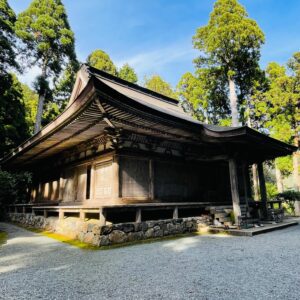
Both the main hall and the three-storied pagoda were wonderful. There are many important national cultural properties such as the statue of Yakushi Nyorai in the main hall. Most of them are from the Heian period (794-1185). Please note that photography inside the main hall is prohibited. At the main hall, the people at the temple will explain about Myotsuji for free. Although it is a little inconvenient, Myotsuji is a temple that many people should visit.
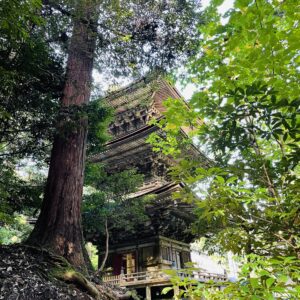
Admission fee: Adults Yen 500, students Yen 460, elementary school students Yen 250
4. Jingu-ji Temple
I went to Jingu-ji Temple, which is about 20 minutes by bicycle from Myotsuji Temple. “Omizuokuri”, in which “Okozui (Holy water)” is poured into the Onyu River on March 2, is famous as a Shinto ritual of Jingu-ji Temple. “Okozui (Holy water)” will be pumped up at “Omizutori” at Todaiji Temple in Nara on March 12, 10 days later. We can understand the depth of the connection between Obama and Nara.
The main hall of Jingu-ji is a national important cultural property. Yoshikage Asakura, the guardian of Echizen, was rebuilt in 1553.
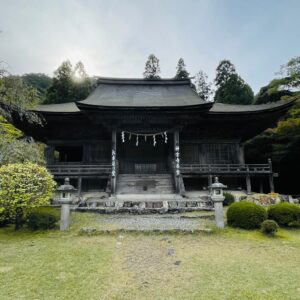
Obama is an area with so many old temples and ancient Buddhas that it is called “Nara with the sea”. It is a starting point for trade with the continent, and it is clear that many people lived there.
Obama was also called “Miketsukuni” as a food supply area for Kyoto. It is also the starting point of “Saba Kaido (Mackerel road)”. “Saba Kaido (Mackerel road)” is a highway that carries marine products landed in Wakasa Bay to Kyoto. “Miketsukuni Wakasa and Saba Kaido” has been selected as the first “Japan Heritage” by the Agency for Cultural Affairs.
It would be nice to remember a long time ago in Obama, which has both sides of the sea road and the land road.
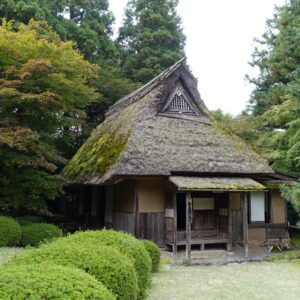
Admission fee: Yen 400
5. Wakasa Ichinomiya (Wakasahime Shrine)
I went to Wakasahime Shrine, which is about 5 minutes by bicycle from Jingu-ji Temple. Wakasahime Shrine was built in 721, the beginning of the Nara period. The main shrine is a tangible cultural property designated by Fukui Prefecture. It is worshiped as a guardian deity of maritime safety and seafood fishing. There were many worshipers on the day I visited, and I felt the depth of faith of the locals.
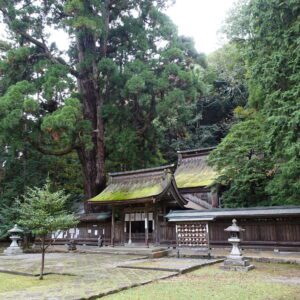
6. “Sotomo Tour” pleasure boat
I went from Wakasahime Shrine to Wakasa Fisherman’s Wharf (about 20 minutes by bicycle) and cruised around the national scenic spot “Sotomo”.
Sotomo Cruise is a course that takes us around many famous places such as Daimon and Komon in about 60 minutes. Wakasa Bay itself is a beautiful bay, so we can enjoy beautiful scenery.
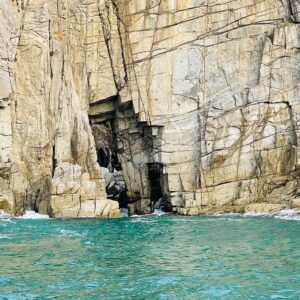
In 2015, US CNN selected Sotomo as one of the “31 Beautiful Landscapes in Japan”. Sure, it’s a very beautiful landscape, but I think it depends on the weather. In my case, it was a little disappointing because it was cloudy when I visited Sotomo Cruise. If it was a fine day, I think I could have enjoyed the beautiful colors of the sea.
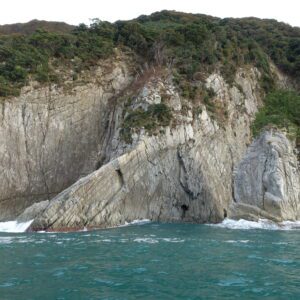

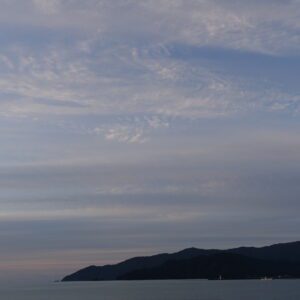
Fees: Adults (junior high school students and above) Yen 2,000, children (elementary school students) Yen 1,000
7. Obama Nishigumi
I went to Obama Nishigumi about 10 minutes by bicycle from Wakasa Fisherman’s Wharf and visited the cityscape. Obama Nishigumi has been designated as a national important preservation district of historic buildings by the Agency for Cultural Affairs. I took a leisurely bicycle tour, but I liked the calm cityscape.

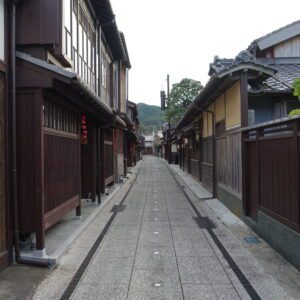
We couldn’t go around the sights of Obama in half a day and thought we needed at least one day. I wanted to revisit Obama.
Note: The departure / arrival times, fees, and admission fees for transportation listed in the text are as of the time of writing the BLOG. Please check for yourself when you go on a trip as it may change in the future.